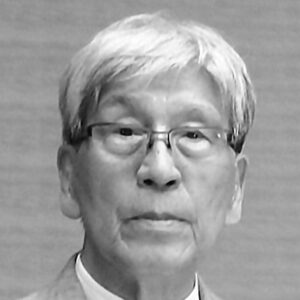Motomi KAWAKAMI


Motomi KAWAKAMI
(Japan)
Chairman of the Japan Institute of Design Promotion (JDP)
Representative of Kawakami Design Room Ltd.
The National Crafts Museum was moved from Tokyo to Kanazawa and will soon be newly opened. In such a memorable year, this Ishikawa International Urushi Exhibition 2020 celebrates its twelfth event. I participated in the Final Assessment where the members of the Assessment Panel selected all the prize winners out of the 80 works which were selected at the Preliminary Assessment.
Urushi has been a familiar and valued material since ancient times. The exchange of Urushi culture between Japan and Asian countries has been active from antiquity. Recently, quite a few events have been held internationally to encourage the revival of Urushi. Unfortunately, in the midst of the COVID-19 Crisis, this time the submissions from overseas were not as high in quantity or quality. It is a pity that the prize winners do not include works from abroad. I hope that more and better works will be submitted in the future.
As Ishikawa Prefecture is the center of Urushi ware production, about half of the total submissions are from artists in this prefecture. Their works are wide-ranging, and each work is a tour de force. The Assessment had two categories; the Art Category and the Design Category. Originally, the boundary between the two categories was not so clear. Even the jurors’ interpretations changed the category of some works. Pictures, sculpture, utensils and architecture are sometimes borderless, not independent from each other or ‘pure’ as a type. They can be at the same time art, utensils and furniture, which enrich our everyday lives.
Urushi artists usually started creating their works by searching for Urushi ware for everyday life. The style has developed and recently a new type of Urushi artist has come into being. They express their own esthetics and ethics with their newly developed materials and techniques. In this way, the novel possibilities of Urushi have been broadened. What impressed me at this Assessment is that, thanks to the result of education today, the young Urushi artists mutually and freely exchange their ideas, released from the closed nature of Urushi producing areas and their traditional styles. Their ideas include kanshitsu (dry lacquer) with new materials, the reconsideration of the origin of Urushi, and so on. I enjoyed catching a glimpse of the possibilities of creating richer, fuller, and better lifestyles with Urushi in the future without sticking to any rigid concept.
